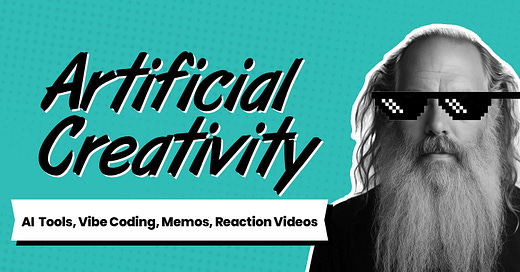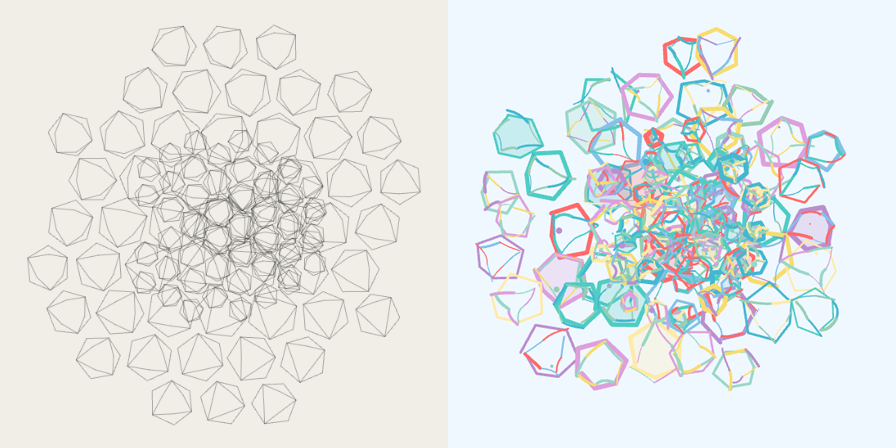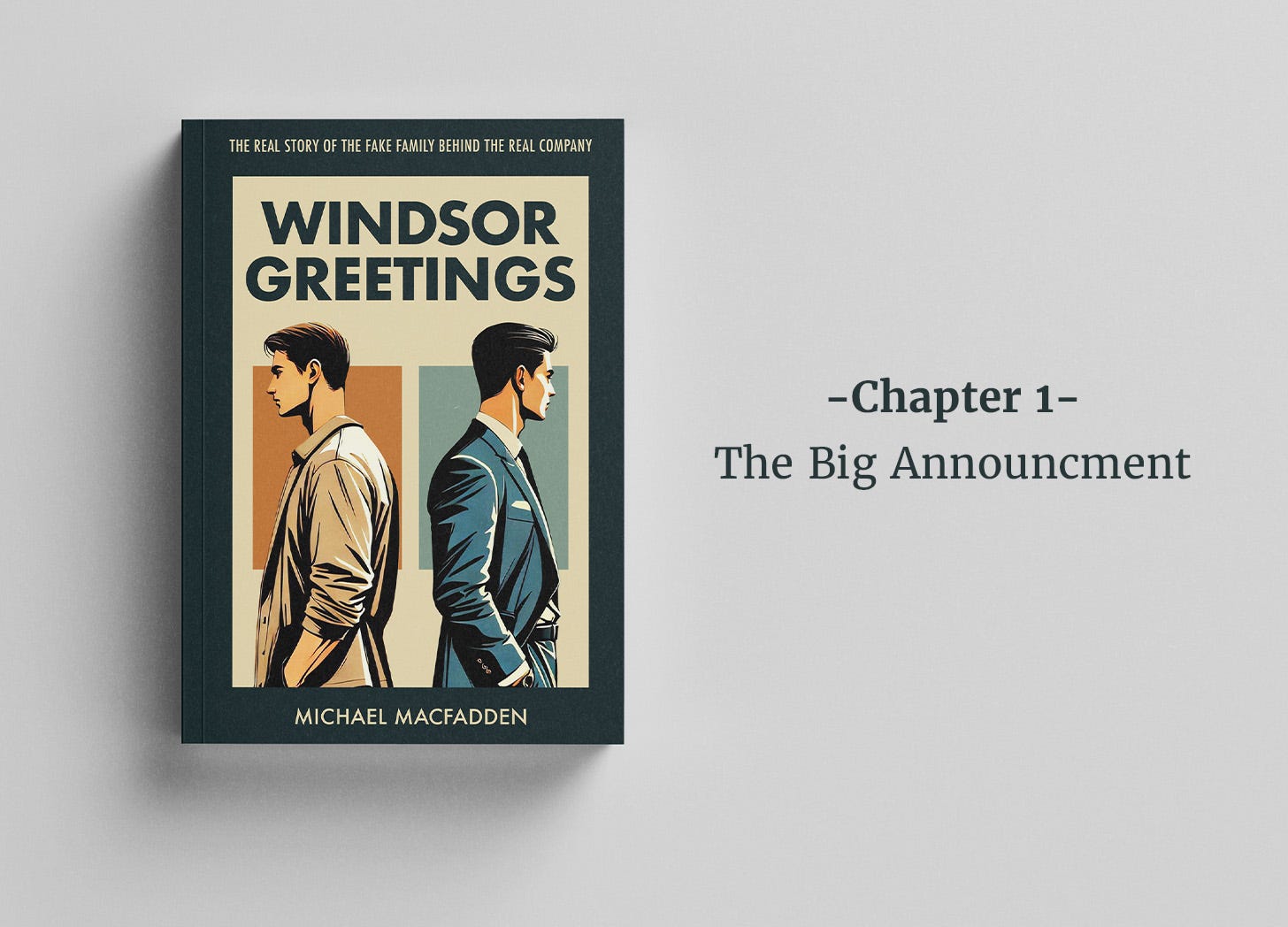Artificial Creativity
Explore how AI is reshaping creativity, from vibe coding to Rick Rubin's latest project, and why now is the time to bet on human imagination.
Hey, Friends! Today is the official start to my summer break. It has been an amazing school year, but I am ready to relax and recharge. I’d love to know what you’re looking forward to this summer in the comments below. Let’s get into it.
The Surface Area of Possibility
While there’s much hand-wringing over AI tools that have contributed to the slop clogging our social feeds these days,
, founder of Behance and former chief product officer at Adobe, shared a different perspective on LinkedIn, stating:AI both lowers the floor and raises the ceiling for creativity. Few breakthroughs have such an impact on both sides of the spectrum of talent.
More people: 100x more people will gain the confidence to express their ideas visually and engage with creative tools again…
More possibility: The greatest artists will have 100x more cycles to discover more surface area of possibility across more creative categories than they were ever able to cover before, ultimately yielding better solutions…
Read the full passage here.
Many of the takes I hear online from the anti-AI camp stem from how much of the training data was scraped, without permission, from the internet. I understand how, for some, that is an irreconcilable ethical red line. I don’t personally believe that generative AI is exactly the same thing as copyright infringement, but it’s hard not to see the similarities.
That being said, if we can compartmentalize that discussion and focus on Belsky’s point, I think he is absolutely correct. Creative expression is a combination of both original thought and practical execution. Many would-be creatives never get started, though, due to a lack of ability. If more people felt empowered to create because the artistic vision in their head became easier to extract, I’d view that as a positive.
Much of what would be created, like the AI slop I alluded to earlier, would be unremarkable. In creative work, though, the misses far exceed the hits. The misses are necessary nonetheless.
To Belsky’s second point, those who already consider themselves creative, empowered with AI, will be able to explore and express their points of view more rapidly, perhaps even in mediums they once dared not venture. Again, the ratio of crap to exceptional work will likely become heavily weighted to the left, but this will only make truly exceptional work all the more impressive.
Takeaway: I’ve long felt that AI has a multiplicative effect for creative types, but now I’m starting to think it might also be additive in helping otherwise not creative people go from zero to one.
The Timeless Art of Vibe Coding
Famed music producer Rick Rubin is meddling in the waters of AI-assisted creativity, having just published THE WAY OF CODE - The Timeless Art of Vibe Coding in collaboration with AI research company Anthropic. The project is a collection of 81 meditations inspired by Lao Tzu’s Tao Te Ching. Each meditation is accompanied by an image which was produced by Anthropic’s text-to-image generation tool.
The work is interactive in that you can remix each image with your own prompts, as in the example below, based on Rubin’s second meditation. I remixed it by asking, “What if this were drawn by a child?”
For context, here’s a sample of the meditation:
Being and non-being create each other. Simple and complex define each other. Long and short determine each other. High and low distinguish each other. Front-end and back-end follow each other.
Therefore The Vibe Coder builds without laboring and instructs by quiet example. Things arise and he accepts them. Things vanish and he lets them go.
As the term vibe coding is only 10 or so weeks old, the title is admittedly tongue-in-cheek, but the project is a fascinating experiment in what’s possible when creative people embrace emerging technologies.
By sharing your work and inviting your audience to remix and share it themselves, your project becomes more than just a piece to be admired. It becomes an invitation to create and a call to action for others to engage.
I can imagine a future where musicians grant their fans the ability to endlessly add verses to their songs, where authors permit their readers to imagine alternate endings to their books, and where painters allow their admirers to modify color values, depth of field, and contrast in their work.
Rubin’s project feels very Rick Rubin. AI in the hands of an artist with a point of view is like most other tools, useless until put to use by the artist.
Takeaway: We may not all be able to build the next generation of creative tools, but we can certainly use them and nudge their use in the right direction.
What’s Vibe Coding
You’d be forgiven if the term vibe coding means little to you. It was originally coined by Andrej Karpathy, former director of artificial intelligence and Autopilot Vision at Tesla. He describes it as:
…a new kind of coding… where you fully give in to the vibes, embrace exponentials, and forget that the code even exists.
He goes on for several more sentences (see his full explanation here). What he is essentially describing is a version of coding that completely ignores the semantic markup typically associated with writing code. Instead, it’s a natural language conversation with a machine that results in functional software.
I built a web app that converts your favorite Substack feeds and articles into three-column print-ready documents using a vibe coding tool called Copilot.
You can check it out here:
Now I’m not a good programmer, but I know enough to know what is possible in the realm of computer programming, even if I can’t actually do the programming myself. With vibe coding, though, I’m now able to bring my kookie ideas to life.
It’s still very much early days, but it’s not hard to imagine where we will be in a few years if the evolution of these technologies persists at its current rate. It’s certainly plausible that non-technical individuals will be able to create enterprise-level software applications with just the help of robot agents.
Hopefully, by then, we’ll have moved on from the cringe-inducing adjective vibe.
Takeaway: What you build is increasingly becoming more important than how you build it.
Shopify Memo
In April of this year, Tobias Lütke, CEO of e-commerce platform Shopify, released an internal memo to all of his employees that was later leaked to the public. To front-run the anticipated negative press, he released it in full on X (read it here).
The gist of the memo is that AI usage is now a baseline expectation at Shopify across all roles.
Digging in a little deeper, the memo articulates the following key points:
Performance reviews will include AI use.
Prototypes should start with AI exploration.
Collaboration and sharing (wins, fails, prompts) is expected.
No new headcount requests without showing why AI can't solve it.
Shopify isn’t alone. Duolingo, Box, GitHub, and others have implemented similar policies. Fiver’s CEO, Micha Kaufman, went so far as to warn his employees, “AI is coming for your jobs. Heck, it’s coming for my job too. This is a wake-up call.”
Many are predicting that memos such as these are just the tip of the iceberg, and a future where AI displaces pretty much every job is just around the corner. Recently, though, I heard an interesting take from David Friedberg of the All In podcast (at 5:25).
To paraphrase him, he describes a hypothetical scenario in which a software developer becomes 20X more productive for a company thanks to AI. The return on investment in salary for that developer would therefore also increase (perhaps even at a greater multiple). He then poses the question: When you have a higher ROI on deployed capital, do you deploy more or less of it? He then says that this is the story of technology going all the way back to the caveman.
The economy isn’t comprised of a fixed sum. As computers assume work traditionally reserved for humans, that frees them up to do other things, thus growing the pie for everyone.
Takeaway: It’s way too early to predict what the future of AI will look like, but humans have thus far adapted to every other technological revolution. Perhaps we should bet on ourselves that we can again.
Reaction Videos
It’s pretty hard to imagine what careers of tomorrow will emerge riding the wave of AI. If we look to the Web 2.0 era, though, it might offer some clues. The mid-aughts through the 2010s brought with them a host of new jobs that never existed before.
Though I’ve never seen the study, many like to say that the number one career choice among children these days is to be a content creator. I’ve spent countless hours enjoying programming on YouTube myself, and thanks to the proliferation of video capture, editing, and distribution, there’s seemingly no niche too small to create content for.
Case in point: RobTV produces music reaction videos. He doesn’t make music himself, he just listens to music, and… you guessed it, reacts to it. Imagine pitching that idea to a major network in the 90s. Beavis and Butt-head aside, this is a format that would never see the light of day. But with YouTube, Rob didn’t need to pitch this idea to anyone. He just had to make it, and let the world decide if it was good or not.
I would highly recommend you check out his reaction to his first listening of Rage Against the Machine’s Killing in the Name (Linked in the image below). It’s absolutely hilarious.
Conservative estimates would suggest that with 123K+ subscribers, and averaging tens of thousands of views per video with some outlier videos obtaining over 1 million views, it’s likely that he is averaging $1,000-$3,000 per month while occasionally reaching the $5,000-$10,000 range. He isn’t raking it in, but he’s earning a respectable income doing what he clearly loves.
If AI can conduct research for you, build software, and predictively solve seemingly impossible problems (see protein folding), what other possibilities may just be around the corner?
Takeaway: Like Rob betting on himself with a webcam and a YouTube channel, it seems inevitable that others will carve out their own niche on the back of AI.
Two More Things
I’m publishing a novella here on Substack. It’s called Windsor Greetings, and you can check it out here. The first seven chapters are already out. I’d love it if you gave them a read and then checked back each Tuesday to find out what happens next.
Also, good things are better when shared. If you liked this, it would mean the world to me if you sent it to someone who might like it too.
I’ll see you in your inbox again next week.
Until then,
-Mike








Ed Zitron, who is an AI critic, had an interesting discussion with software developer Carl Brown, asking what AI means for developers at least currently. I thought it was an interesting discussion that might shed some light on what it may be really like for developers integrating AI into their workflows. https://omny.fm/shows/better-offline/the-truth-about-software-development-with-carl-brown
Mike, I’m assuming summer break does not include a summer break from your Friday “usual” or “unusual” as the case may be. This offering was pretty cool. I’ve learned a lot from your “weeklies” on Fridays. Keep writing! And have you thought about a sequel or prequel to Windsor Greetings? Just saying…. Hope to see you all over the summer.